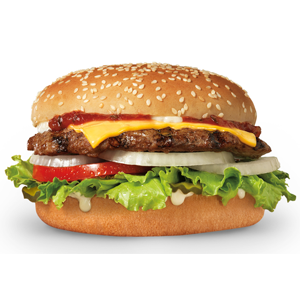Grocers, food makers find growth in gluten-free
The December 2005 issue of Facts, Figures and the Future, a monthly e-newsletter from the Food Marketing Institute, ACNielsen and The Lempert Report (www.factsfiguresfuture.com ), reported that grocers and food makers are working to meet the needs of consumers suffering from celiac disease, a gastrointestinal problem caused by intolerance to a grain protein found in wheat, rye, and barley called gluten.
For those suffering the affliction, gluten consumption damages the wall of the small intestine, which impedes the absorption of nutrients into the blood system. Once an afterthought in the overall scheme of health issues, today celiac disease (or gluten intolerance) has gone mainstream, affecting an estimated one in 133 (or 2.18 million) Americans. What makes the disorder so difficult to deal with is that there is no known cure; the only treatment currently available is abstinence from products containing gluten. This is a difficult task, as there are hidden sources of gluten in the ingredients of many processed foods.
Because of the sheer size of the gluten-sensitive audience, manufacturers and retailers have taken notice and now offer products addressing the problem. According to ACNielsen LabelTrends data, nearly $400 million was generated at retail (mass, club, grocery, excluding Wal-Mart) by products bannered as gluten-free for the 52-week period ending October 8, 2005. That represented a 6.2 percent increase in retail dollars, which followed a 16.9 percent increase the previous year. Furthermore, 325 new gluten-free products were introduced over the past year, raising the total number of UPCs to 1,220.
In response to the growing market, many grocers have gone beyond simply carrying gluten-free products and are introducing shelves and entire sections of gluten-free items. The Portland, Maine-based Hannaford Bros. grocery chain, for example, with 140 stores serving northern New England, upstate New York, Virginia and the Carolinas, has recently added gluten-free sections to its format.
The Rochester, N.Y.-based Wegmans Food Market chain was substantially ahead of the gluten-free product curve. In 1985, Wegmans created “Gluten Sensitivity, Making a Special Diet Easier to Swallow,” a booklet for its shoppers. In addition, in the late ‘90s, Wegmans launched a “Wellness Key” initiative in which all gluten-free store-brand products were labeled with a “G” for easy identification. Today, the firm’s Web site includes a complete list of the branded gluten-free products it carries.
“Grocers Discover New Market: Gluten-Sensitive Consumers,” Facts, Figures and the Future, December, 2005.
Burger chain slims down, beefs up
Blame focus groups for this one. When burger chain Hardee’s was looking for a way to set itself apart from the likes of McDonald’s and Burger King, it hired L.A. ad agency Mendelsohn/Zien to revamp its menu and boost its flagging sales. After research respondents repeatedly said they longed to be able to buy thick, juicy burgers like those found at T.G.I. Friday’s at fast-food restaurants, the agency directed the chain to go big, bigger, biggest with its menu. That was in 2003. The Thickburger line debuted in April of that year and same-store sales increased in 23 of the following 27 months.
 An equally hefty driver of the chain’s turnaround, as chronicled in an October 2005 Business 2.0 article, has been the work of Andy Puzder, CEO of Hardee’s parent CKE Restaurants. Over a two-year period, he visited 300 Hardee’s stores, experiencing firsthand the poor food, lousy service and unclean facilities. As a result, he pared the company’s cumbersome employee manual down to 12 salient points, remodeled some restaurants and closed others, and simplified the menu to focus on mammoth burgers.
An equally hefty driver of the chain’s turnaround, as chronicled in an October 2005 Business 2.0 article, has been the work of Andy Puzder, CEO of Hardee’s parent CKE Restaurants. Over a two-year period, he visited 300 Hardee’s stores, experiencing firsthand the poor food, lousy service and unclean facilities. As a result, he pared the company’s cumbersome employee manual down to 12 salient points, remodeled some restaurants and closed others, and simplified the menu to focus on mammoth burgers.
If the nation goes through another bout of lite-food mania, the chain could be in deep trouble. (Even its new Red Burrito taco salad is loaded with ground beef.) But for now, Hardee’s seems to have found a niche it can sink its teeth into.
“Fat Sells,” Business 2.0, October 2005
Is there a German word for cupholder?
A January Wall Street Journal article gave an entertaining look at a large-scale ethnographic research effort by Volkswagen to find out what drives Americans’ love affair with their cars. The 18-month project, dubbed “Moonraker,” has put VW engineers on the road and in the passenger seat with car owners to better understand how we use our cars and how VW can make its cars more appealing to U.S. drivers. The project was launched in response to the heavy losses in the past two years posted by the U.S. unit of VW, losses caused by declining sales, unfavorable exchange rates and quality problems.
The VW team hit 24 states in its first 24 days here, visiting the Mall of America in Minneapolis, the Rock and Roll Hall of Fame in Cleveland and attending a rodeo and a drag race in Dallas. Team members have also ridden Greyhound buses, rented rental cars and taken red-eye flights and subway trains, all in the name of getting a true feel for the many ways to travel the United States.
What have they learned so far? “In Germany, it’s all about driving. But here, it’s about everything but driving,” said VW designer Reto Brun. “People here want to use their time in other ways, like talk on the cellphone.”
VW engineer Volker Jagodzinski spent a day observing a single mother as she ran errands and shuttled her kids to school. “I began thinking about what specific features her car needed,” he said. “It was about living the customer’s life and putting ourselves in their place.”
While it sounds like the team is gathering a lot of useful data, it seems to be having a hard time convincing the people at VW HQ in Germany that things like cupholders really are important features. To bring the experiences closer to home, the U.S. team sends short movies of its experiences to headquarters each month.
Despite some of the resistance to the findings, VW appears to be convinced that this type of immersion exercise is worthwhile. It has started another one, dubbed “Swan Lake,” for the China market and is also launching a similar program in India.
“VW’s American Road Trip,” Wall Street Journal, January 4, 2006
